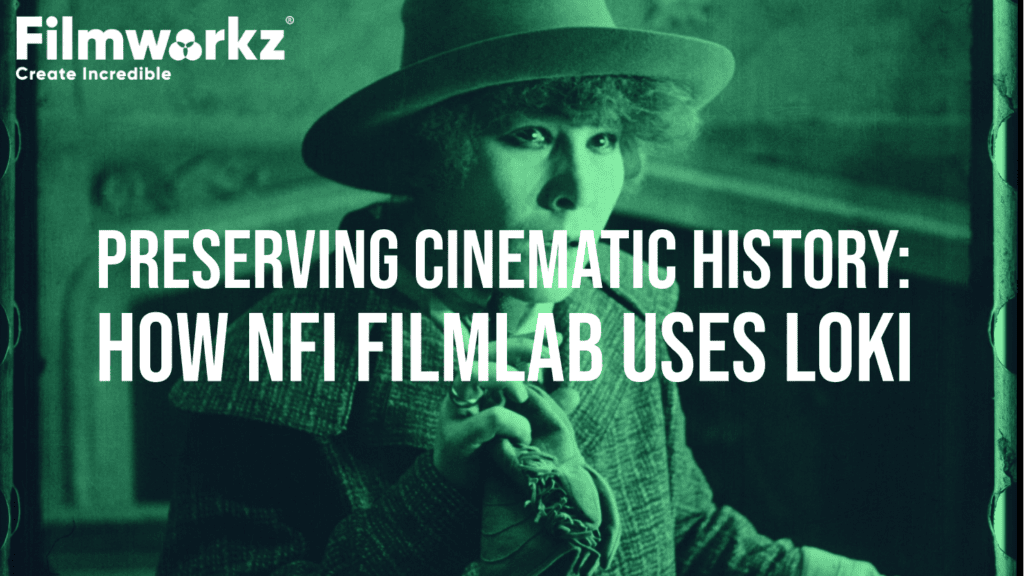Preserving Cinematic History
For over 60 years, NFI Filmlab has been at the forefront of film restoration, blending both photochemical and digital technologies to ensure the survival of cinematic heritage. As one of Europe’s leading film laboratories, NFI handles a diverse range of restoration projects, from nitrate films to modern archives. Their commitment to preserving history has led to the restoration of over 200 Hungarian national films in the last seven years, with the oldest dating back to 1896. In addition, they have expanded their expertise internationally, collaborating with institutions across France, Austria, Belgium, and even Hong Kong.
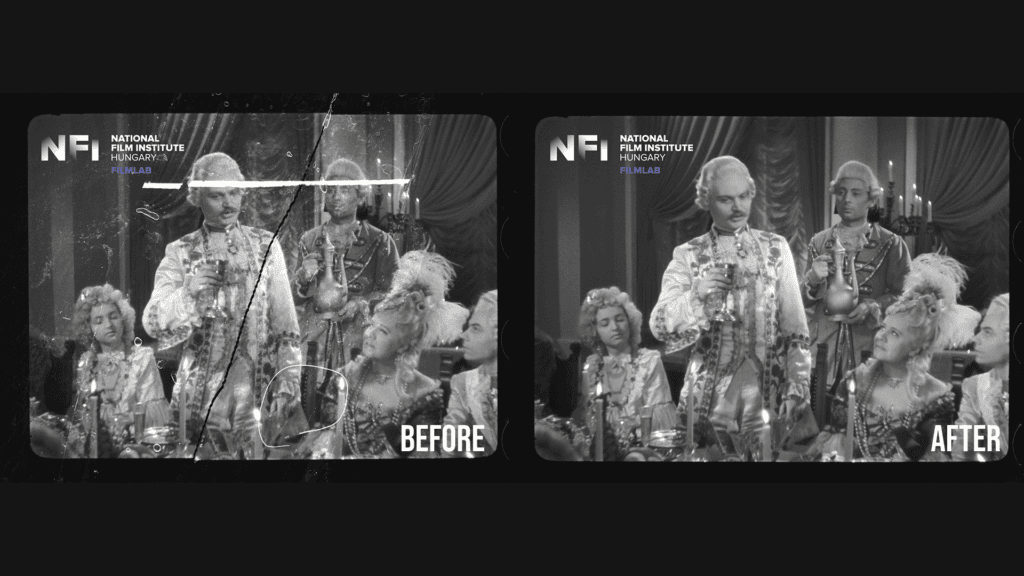
With such an extensive workload, efficiency is paramount. Enter Loki, our automated tool, which has helped streamline NFI Filmlab’s pre-processing and post-processing workflows.
Why NFI Filmlab Chose Loki
When selecting a restoration solution, NFI sought a batch-processing tool that could enhance their workflow without disrupting their established methods. Loki’s ability to work seamlessly combined with the DVO tools made it the ideal choice.
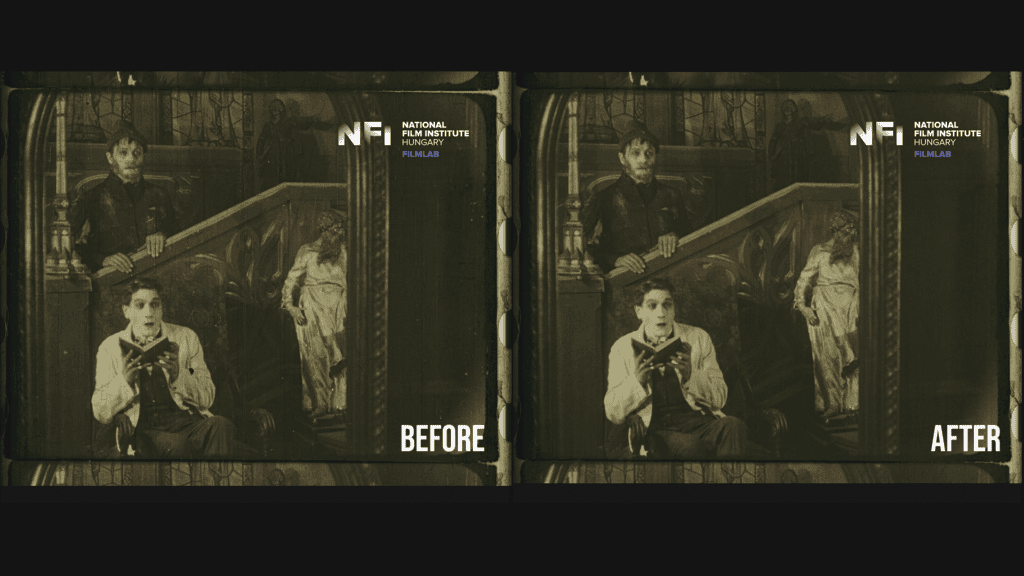
“We needed an easy-to-use, batch-processing solution to speed up our pre-processing and post-processing tasks,” explains Viktoria Sovak, head of the NFI Filmlab. “Loki fit perfectly into our workflow as a complementary tool.”
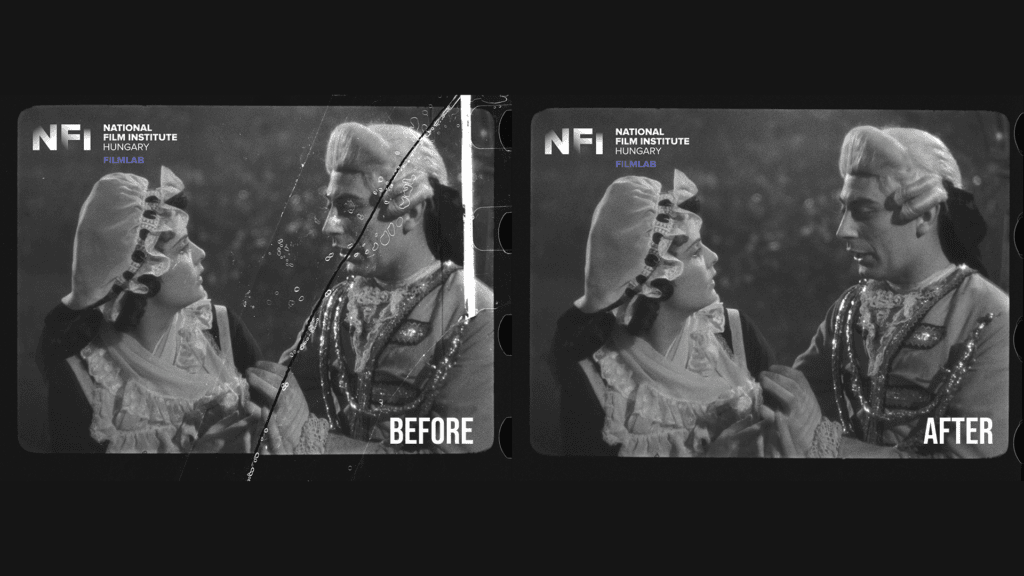
Integrating Loki into the Restoration Process
NFI primarily works with scanned DPX file sequences, typically from original negatives or, in some cases, positive copies. A standard black and white film restoration workflow at NFI looks something like this:
- Pre-Cleaning: Stabilized and flicker-free image sequences are pre-cleaned using DVO Dry Clean in Loki. This ensures an efficient pre-processing stage without overburdening restoration workstations.
- Quality Control & Restoration: Once pre-cleaning is complete, the sequences return to the restoration artists for detailed QC and final restoration.
- Grain Management: In some cases, after color grading, selected scenes are put back into Loki for grain management using DVO Tools to achieve the perfect look.
- Experimental Use: NFI has also started using DVO Frame Lock to stabilize over scanned films during pre-processing.
By leveraging Loki in these areas, NFI has been able to boost efficiency and reduce strain on key restoration resources.
The Impact of Loki on Efficiency
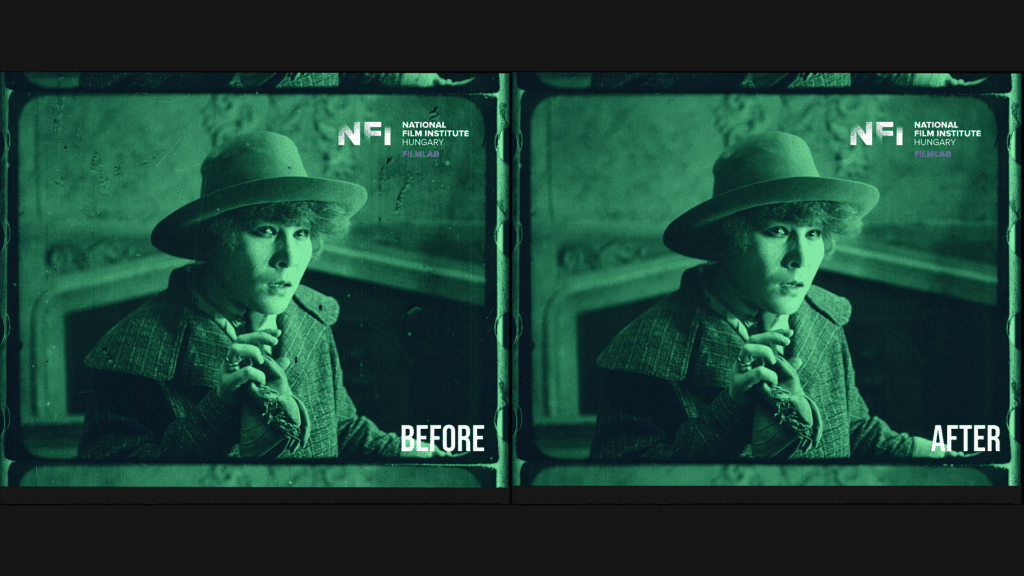
Loki has introduced key benefits, particularly in handling background tasks and repetitive processes. Tasks such as grain management and dust busting are significantly faster now with the implementation of Loki in their workflow.
“The DVO Dry Clean tool is an essential part of our black and white restoration workflow,” explains Balázs Tóth, head of NFI’s digital film restoration department. “It requires heavy QC afterward, but its speed and efficiency make it indispensable.” he adds “The watch folder feature is great for sharing our Loki node access across all workstations on the network and we can use multiple watch folders for different tasks.”
With Loki’s evolving capabilities and NFI Filmlab’s expertise, the future of film restoration looks brighter than ever.

